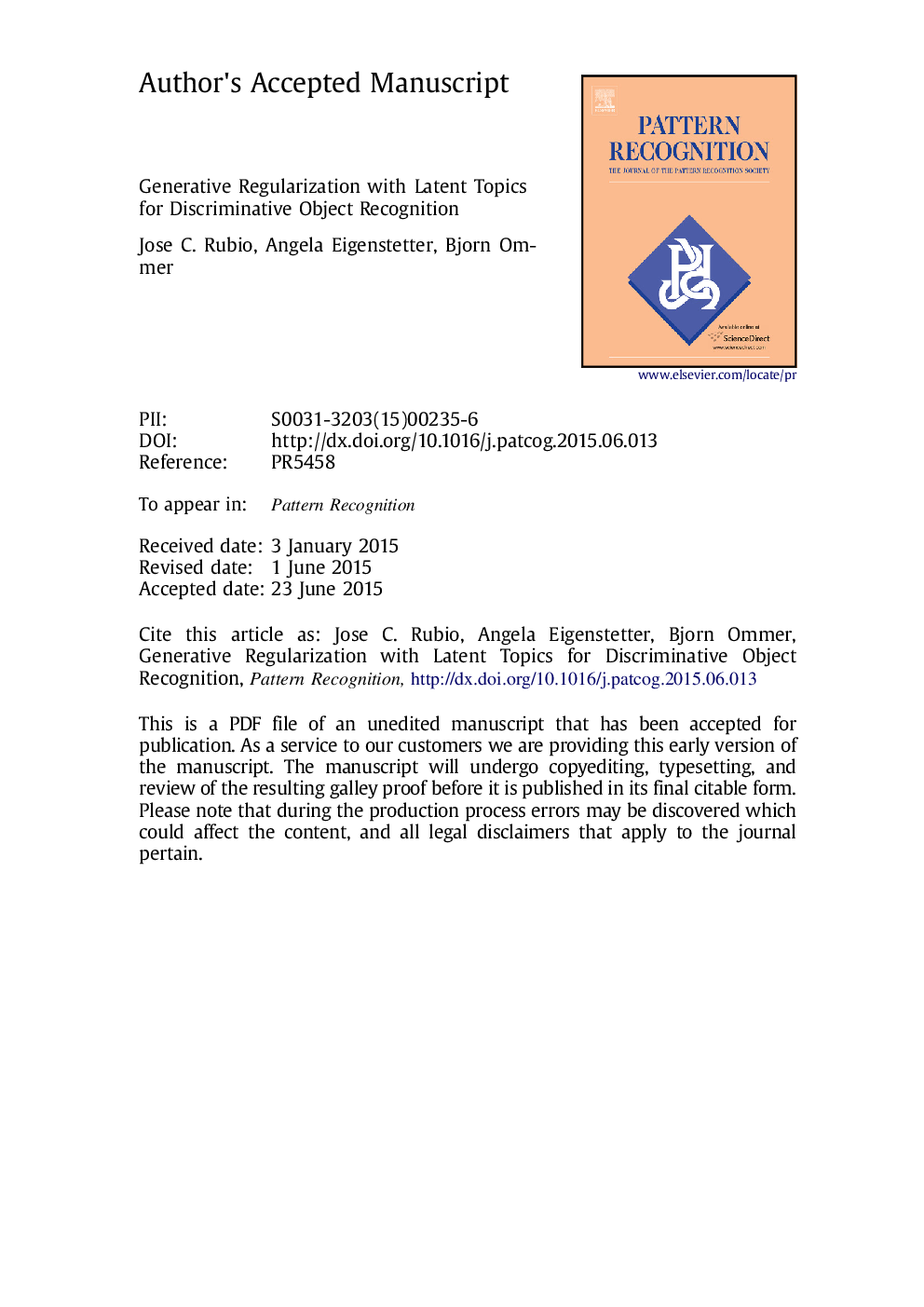| Article ID | Journal | Published Year | Pages | File Type |
|---|---|---|---|---|
| 10360742 | Pattern Recognition | 2015 | 25 Pages |
Abstract
Popular part-based approaches to recognition are currently limited to few localized parts, which only poorly represent the fine-scale details and large variability of object categories. Extending to hundreds of specific part detectors helps to capture peculiar characteristics but due to their specificity, for each object instance different parts will be helpful and others will yield noisy responses that actually impair classification. While training the part-based model, we thus need to learn which parts are relevant for which training instances. To automatically discover these latent topics of parts and instances we employ generative non-negative matrix factorization and seek topics with low reconstruction error. To assure recognition performance this generative approach is embedded within a discriminative latent max-margin procedure that separates classes while optimizing the latent topics. Consequently, generative reconstruction is regularizing discriminative classification, while the latter ensures that topics actually help in recognition. Experiments on PASCAL VOC demonstrate the recognition performance of our model as well as the construction of meaningful topics.
Related Topics
Physical Sciences and Engineering
Computer Science
Computer Vision and Pattern Recognition
Authors
Jose C. Rubio, Angela Eigenstetter, Björn Ommer,
